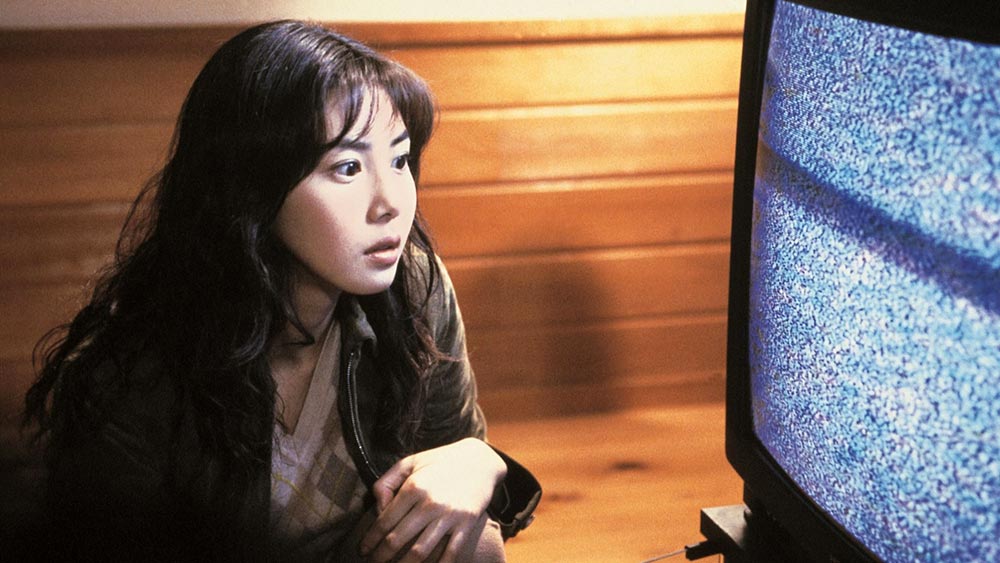Director Hideo Nakata’s 1998 film, Ringu, departs in a few key ways from Koji Suzuki’s 1991 novel of the same name, but the creepy narrative engine that made both the book and film series such enduring and influential works of modern horror remains intact. The frighteningly simple premise involves a cursed videotape that dooms its viewers to death within a week of watching it. As the film goes on, more is revealed surrounding the tape’s mysterious origin and how those who view it might escape their death sentence. In its simplest form, though, that’s it: watch the tape and die.
Ringu’s cool visual elegance and choice of intelligent, slow-burn implication over pedantic exposition and bombast has had an enormous stylistic influence on prestige horror. The “bones” of A24’s arthouse approach—thoughtful compositions over coverage, psychological realism, and unhurried pacing—are abundantly evident. The conceptual genius of both Nakata’s film and Suzuki’s novel, however, is their marriage of the mundane and the supernatural.
The idea that something as innocuous and unromantic as a videotape could harbor an evil curse brings the horror down to a familiar level. The cursed object is not an ancient amulet, an exotic mask from parts unknown, or a dusty tome, but something from our everyday lives—a cheap, consumer-grade chunk of plastic. What makes the tape in Ringu so terrifying is the medium’s ease of accessibility, consumption, and dissemination.
Nakata’s film preserves and, arguably, enhances Suzuki’s story by bringing it to the screen. A film about what is essentially a haunted film holds a certain reflexive power, and by translating Suzuki’s prose into images, it achieves a transmuted perfection, spiritually arriving at its true native format. Thus, when you watch Ringu, you watch the tape. Yet there is another, more sinister dimension to the film beyond the viewer’s impending death. How does one escape the curse? It’s easy: make a copy of the video and show it to someone else. Herein lies the film’s urban-legend quality and perhaps its most chilling aspect.
In Suzuki’s novel, he likens the curse to a virus that survives by replicating itself. Ring refers both to the circular mouth of the well from which the baleful spirit of Sadako, the tape’s psychic author, gazes and to the ever-expanding nature of the phenomenon. Gore Verbinski’s 2002 American remake hammers home the visual ring metaphor, going as far as to make its tagline, “Before You Die, You See The Ring”. This somewhat flattened articulation of the basic premise might seem a little dumb, and the remake might seem unneccessary, but the very fact of its existence embodies the essence of Ringu’s horror—it spreads.
Ringu screens Tuesday, October 31st, at Roxie Theater.



